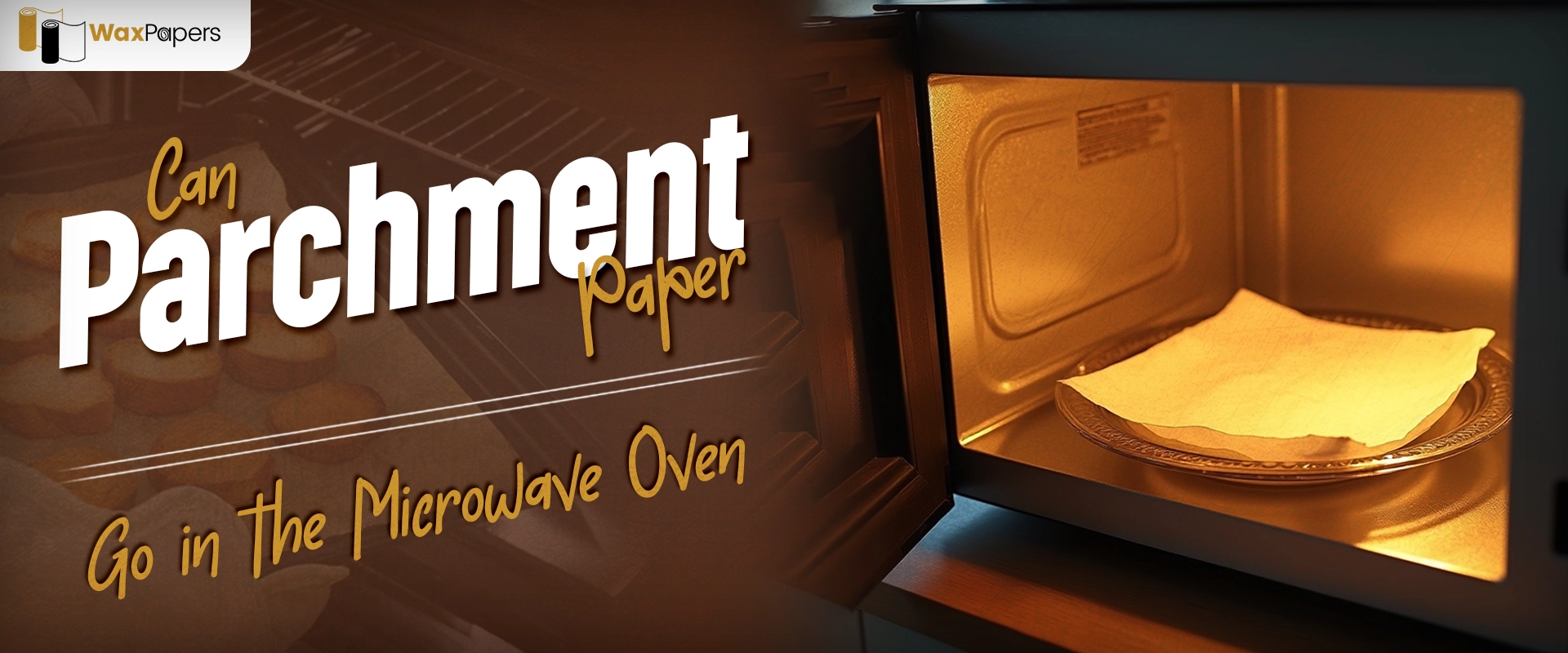
Can Parchment Paper Go In The Microwave Oven
September 9, 2025 Uncategorized
Microwave boxes are indispensable for the modern kitchen. It offers speed and efficiency in heating and cooking meals. One of the common questions that home makers or restaurant owners have about parchment paper, which is one of the common kitchen tools. The question is, “Can you microwave parchment paper?”
While many people use it without hesitation, there are several who have concerns about the use of this coated paper in the microwave. Probably the safety of the food and the liability of food contamination due to the elements in the paper make people question the food safety and its use in the microwave. Understanding of this needs technical reasoning and material science, which we will discuss in this blog.
What Is Parchment Paper?
Custom parchment paper is specially treated cellulose-based paper that has a non-stick surface. This paper is resistant to grease and moisture and is the best option for packing food items. The water-resistance structure of the paper is due to a process known as sulfuric acid treatment or quenching. This process partially dissolves the surface fibres and resolidifies them, ultimately creating a cross-linked structure that is resistant to water.
Custom parchment paper sheets have significant resistance to heat. You can not only use parchment in the microwave but also in the oven. The reason behind this heat resistance lies in the composition of the paper. Such as:
Composition Of Parchment
Cellulose is the main material used in the manufacturing of parchment. It is extracted from wood pulp, which consists primarily of long chains of glucose molecules. Each cellulose chain consists of β-1,4-linked D-glucose units that form a strong linear polymer structure (C6H10O5)n.
The hydrogen bond between the hydroxy group (–OH) stabilizes the production of crystalline regions to provide strength and semi-crystalline flexibility. This is the reason why parchment sheets are resistant to tearing and are structurally even when heated at high temperatures.
Coating
This paper is coated with silicone that gives it non-stick and heat-resistant properties. Silicone polymer in the form of polydimethylsiloxane (PDMS) is applied to the paper in thin form and has the following properties:
- The methyl groups (–CH3) in silicone help in repelling water and oils and create a non-sticky surface.
- The presence of a methyl bond in silicone makes it heat-resistant up to a temperature of approximately 300°C. So the answer to the question of how long parchment paper can go in the microwave is approximately 300°C.
- The methyl bond protects the cellulose material beneath the surface from direct thermal stress.
- Due to a low dielectric constant, silicone does not absorb microwave radiation and ensures the safety of paper in the microwave.
- Another reason for this heat resistance lies in the fact that silicon has a low dielectric constant. Due to this, silicone does not absorb microwave radiation and ensures parchment paper for food safety in the ovens and microwave.
Parchment Sheet’s Structure And Heat Resistance
The moisture content of parchment is low due to acidic treatment. During this process, the paper pulp is passed through sulphuric acid to hydrolyze the cellulose fibre. This hydrolysis process cross-links cellulose chains and partially reduces the available hydroxyl groups. Due to the reduction in the available hydroxyl group, the paper becomes nearly impermeable to water and grease. When you place this paper in the microwave, it does not swell or overheat due to water absorption. As the hydroxyl group in this paper is low, there is minimal interaction with the microwaves and hence low absorption of heat.
Chemically Stable At Household Microwave Frequencies (2.45 GHz)
Water is a dipolar molecule that is excited by microwaves, leading to the vibration of water molecules, which causes heating. Due to a low amount of water, there is less vibration and less heat generation. Aside from this, cellulose and silicone are both non-polar and do not react with microwaves. The outcome of this is that parchment stays stable and does not overheat on its own. It only warms due to contact with food.
Non-reactive with most foods
Cellulose is the backbone of parchment and is non-reactive to acids and several organic compounds. On the other hand, silicone is resistant to weak acids and bases, which leads to no leaching of chemicals in the food. So you can use custom parchment paper sheets directly in contact with the paper without the fear of leaching toxins due to heat.
Read More:What is Parchment Paper? A Guide to its Uses & Benefits
Mechanism: Dielectric Heating of Polar Molecules
Water has a dipole of 1.85 Debye due to its polar nature. In the presence of oscillating microwaves, the diapoles constantly try to align with the alternating electric field. The microwave’s electric field changes approximately 2.45 billion times per second; the water molecules cannot perfectly follow it. This lag creates friction and converts the electromagnetic energy into heat.
Aside from this, the salt and dissolved ions also absorb microwaves by oscillating back and forth, producing heat in joules. So even after production of heat, why does parchment still remain stable under high temperature? The answer to this question lies in the selective absorption of heat.
Direct Effect: Selective Absorption
Microwaves have a different tendency to interact with molecules. Polar and ionic species react strongly with microwaves. Semi-polar and non-polar molecules have a weak and very little tendency to interact with microwaves, respectively. As the main components in branded parchment paper are silicones and cellulose (water being present in very small amounts), the paper remains stable and does not overheat or burn.
Why It Is Safe
Parchment paper does not absorb heat directly due to its nonpolar components, cellulose (non-polar) and silicone coating (low dielectric constant ~2.7). These materials exhibit very low dielectric loss factors at a microwave frequency of 2.45 GHz, which is a measure of energy absorption. Due to this, the parchment remains effectively transparent to microwave radiation and does not heat independently. The ignition temperature of parchment is approximately 450°F or 232°C, which is much higher than microwave food temperatures.
Type Of Food And Impact On Heating
Most of the food items have water content that limits the maximum heating to 100°C. The foods that have low water content rarely exceed 180–200°C unless you severely heat them, such as bread or chips. As the ignition of cellulose requires a temperature of >230°C, parchment paper sheets and rolls are less likely to burn under normal microwave conditions.
Silicone Coating
The PDMS silicone layer has strong Si–O bonds (bond dissociation energy ~450 kJ/mol), which are far stronger than C–H or C–O bonds in cellulose. This gives silicone thermal stability up to 300°C, higher than conditions typically present inside a microwave. It also resists oxidation and prevents grease absorption, while maintaining a non-stick barrier even under prolonged heating.
Heat Tolerance Comparison With Other Custom Papers
| Paper Type | Material Base | Microwave Risk | Safety Level | Notes Useful |
| Wax Paper | Paraffin Coat | Melts Smoke | Low Safe | Short Heating |
| Paper Towels | Untreated Cellulose | Scorch Risk | Medium Safe | Absorb Spills |
| Aluminum Foil | Metal Sheet | Sparks Arcing | Very Unsafe | Reflect Waves |
| Parchment Paper | Silicone Coat | Heat Resistant | Highly Safe | Grease Proof |
| Butcher Paper | Thick Kraft | Burns Possible | Medium Safe | Meat Wrapping |
| Baking Paper | Silicone Layer | Heat Stable | Highly Safe | Oven Friendly |
| Kraft Paper | Unbleached Pulp | Flammable Risk | Low Safe | Eco Friendly |
| Freezer Paper | Plastic Coat | Melt Possible | Medium Safe | Cold Storage |
| Tissue Paper | Thin Cellulose | Ignite Risk | Very Unsafe | Decorative Use |
Conclusion
The answer to can you microwave parchment paper is simply yes. This is because parchment has significant resistance to microwaves due to its chemical and molecular nature and the way it is processed. You can freely heat your food while wrapping it in this paper. Just make sure you are getting the paper from a reputable manufacturer, such as Waxpaper Ca. We have been manufacturing the paper for several years and helping the food business in Canada to sell food in clean and food-grade paper.


